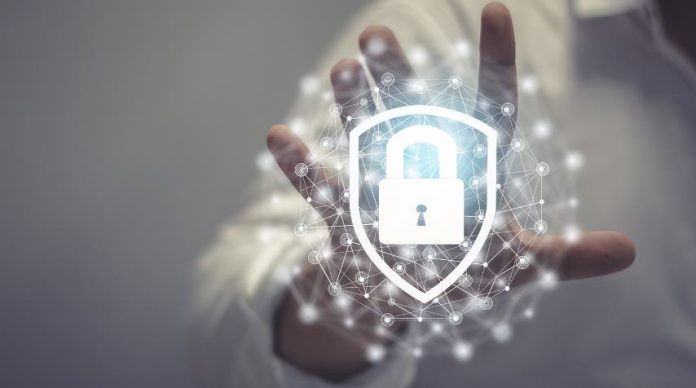Table of Contents
Technology has significantly shaped the way people interact. The main objective of most innovations made over the past few years is to improve efficiency.
Among the primary beneficiaries of these advancements are entrepreneurs. Today, you can run almost all your business operations remotely, from sales process and marketing to accounting and bookkeeping.
Customers can also order, pay, and receive goods without visiting brick-and-mortar stores. One thing that has made this possible is the evolution of payment systems. These advances deliver faster and, in some cases instantaneous payments.
However, with this convenience comes the risk of cyber-attacks. Cybercriminals are always looking for weaknesses to exploit, and digital payments can present such an opportunity. These attacks can cause substantial financial losses, and they may also hurt your company’s reputation.
So, what should you do to boost the security of your payment processes? Read on to learn more.
The most common payment cyber-attacks
To beef up security effectively, you must understand what you’re likely to face.

Here are some of the threats you should expect from payment-related cybercriminals:
- Man-in-the-middle (MITM) attacks: They involve intercepting communication between a business and its customers. Hackers steal sensitive information and use it to manipulate transactions.
- Skimming: Cybercriminals use tampered card readers to collect customers’ credit card information at point-of-sale terminals, gas pumps, or ATMs. Usually, hacktivists will use stolen information to withdraw cash or make online purchases.
- Phishing: The attackers may impersonate your company to steal the customer’s sensitive data. They may also use the opportunity to trick the victim into transferring money from their bank accounts.
- Server breaches: Malicious actors gain unauthorised access to your company’s servers and steal payment information.
It’s worth noting that most organisations outsource their payment processing to third-party providers. However, this doesn’t shield them from the repercussions of the cyber-attacks mentioned above.
How To Boost the Security Of Your Payment Processes?
Not sure how to secure your systems? The following tips should help you get started:
1. Set up IVR payment
Interactive voice response (IVR) technology allows customers calling a business to interact with a menu or series of questions using their voice or telephone keypad. It can eliminate the need for human interaction on some calls and, thanks to its convenience, increases customer satisfaction. You can leverage this innovative feature to set up a secure IVR payment system.

How does it work?
The customer calls your payment hotline and selects “payment” from the menu options.
They’re then asked to input their account number and payment amount.
The IVR system carries out ID&V (identification and verification) and processes the transaction.
The caller then receives a confirmation message from the system.
It’s worth noting that the IVR system uses dual-tone multi-frequency (DTMF) technology to capture and interpret the customer’s inputs. DTMF masking ensures that the information that callers provide is encrypted.
All that customer agents see are masked digits but not the actual credit card details. Also, compliance with Payment Data Industry Data Security Standards (PCI-DSS) ensures the confidentiality of customers’ sensitive data.
Another key benefit of the IVR payment system is payment process automation. This reduces the risk of human error, which translates to more security throughout the operations.
2. Choose the right contact centre software provider
The security of your payment systems starts with the kind of contact centre software provider you hire. They offer a platform to handle inbound and outbound customer interactions, including payment transactions. So, any error from their side could lead to a serious cyber threat.

When shopping around for contact centre providers, it’s essential to ask them the following security-related questions:
Is it compliant with PCI-DSS?
What kind of encryption does the provider use to secure the client’s information? It must scramble payment data and make it unreadable to unauthorised parties.
Does it have any fraud detection mechanism? Most providers use artificial intelligence to detect and prevent fraudulent transactions.
Are the provider’s employees trained on security best practices?
The answers to these questions can help you gauge the security strength of a given contact centre provider. Assess all potential partners and choose one that’s highly reputable.
3. Carry out regular vulnerability testing
Hackers are constantly seeking ways to attack your payment system. It’s important to regularly find and eliminate any loopholes in your system before cybercriminals take advantage of them. The best way to achieve this is through vulnerability testing, which involves the analysis of potential network weaknesses.

Vulnerability testing allows you to adapt to cyber threats by proactively addressing your system’s weaknesses. By the time hackers think of exploiting the loopholes, you’ll already have eliminated them. This significantly reduces any risk of security breaches and prevents unauthorised access to financial data in your database. If your software is a service (SaaS model) good providers will conduct regular testing on their solution.
4. Train your staff on cybersecurity
Over 80% of data breaches are due to team member negligence. Many team members fall victim to account compromise and social engineering attacks. As a result, sensitive company and customer data fall into the wrong hands.

As a business owner, it’s your responsibility to ensure that employees understand their role in the security of the payment system. You can make it compulsory for everyone to attend a cybersecurity training program every month, quarterly, or annually. Among the topics you should cover include identifying and avoiding phishing, password management, and handling sensitive data.
Conclusion
A secure payment system enhances customer satisfaction and boosts your company’s reputation. Every loyal customer wants to enjoy convenient payment processes in a protected system. A multi-pronged approach achieves this as it increases vigilance for any potential data breach. Choosing the right contact centre provider and IVR system can go a long way in building your business’s success.


